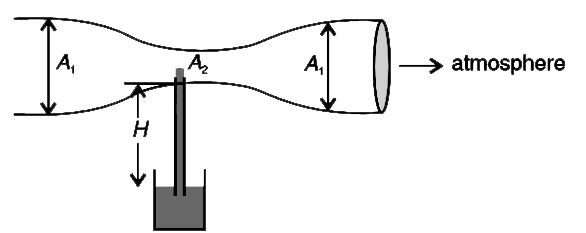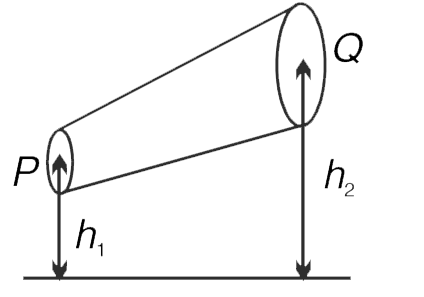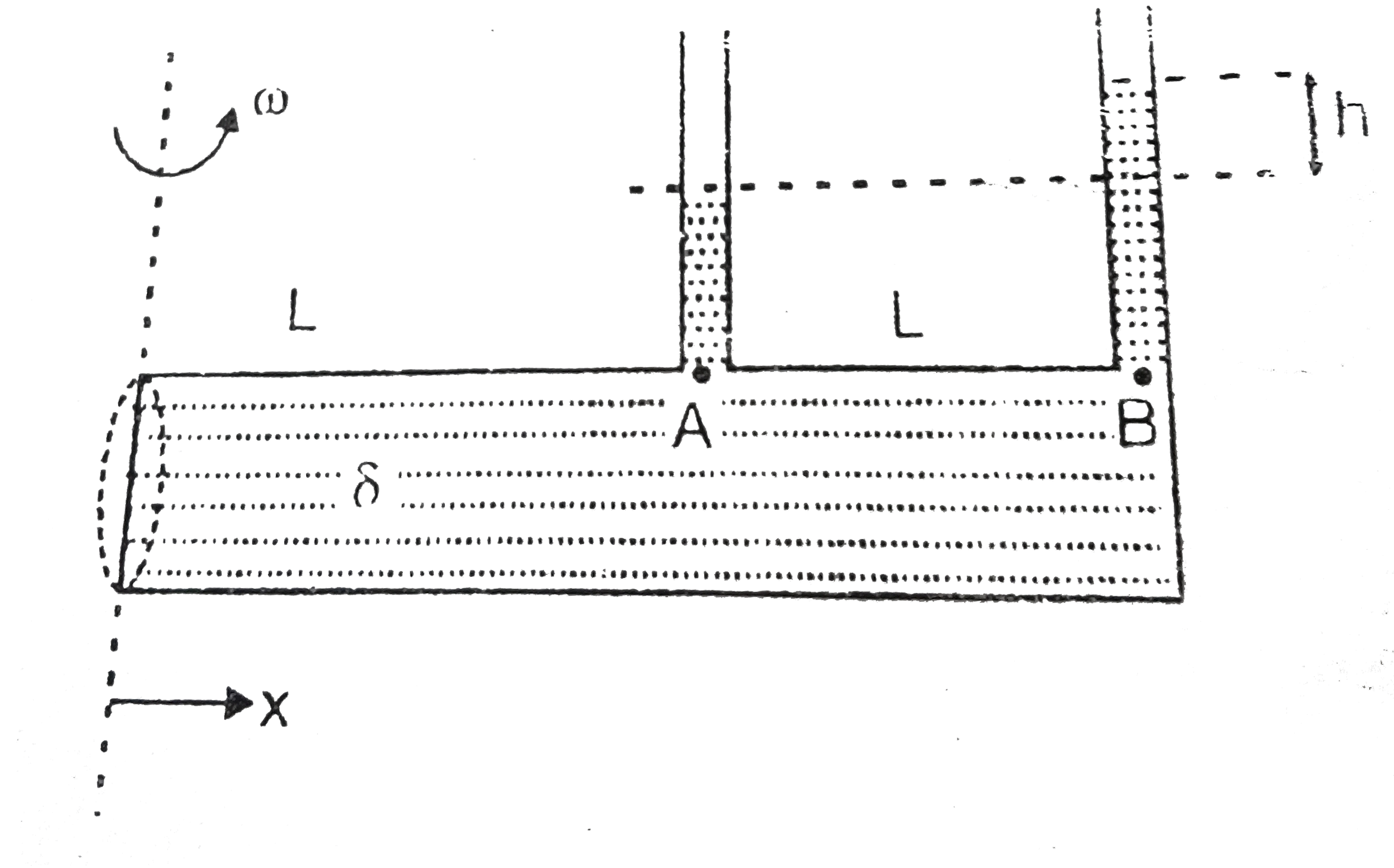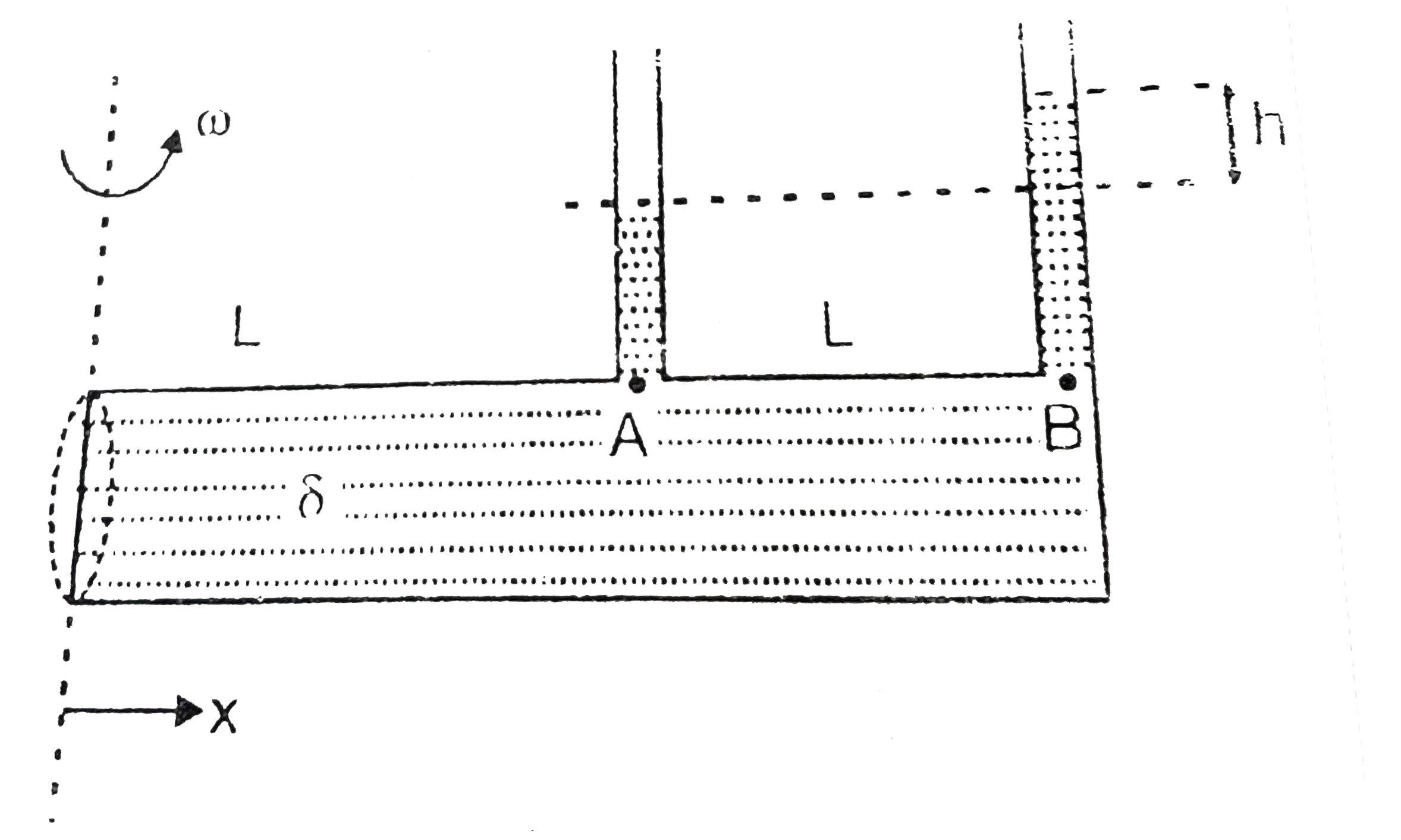Water is flowign is streamline motion through a tube with its axis horizontal. Consider two points A and B in the tube at the same horizontal level
The pressures at A and B are equal for any shape of the tube
the pressure are never equal
the pressure are equal even if the tube has a uniform cross section
the pressures may be equal even if the tube has a nonuniform cross section.
The correct Answer is:C, D
Step by step video, text & image solution for Water is flowign is streamline motion through a tube with its axis horizontal. Consider two points A and B in the tube at the same horizontal level by Physics experts to help you in doubts & scoring excellent marks in Class 11 exams.
Updated on:21/07/2023Topper's Solved these Questions
- FLUID MECHANICSBook:HC VERMAChapter:FLUID MECHANICSExercise:Exercises
Explore 35 Videos
- FLUID MECHANICSBook:HC VERMAChapter:FLUID MECHANICSExercise:Objective 1
Explore 21 Videos
- CIRCULAR MOTIONBook:HC VERMAChapter:CIRCULAR MOTIONExercise:Exercises
Explore 30 Videos
- FRICTIONBook:HC VERMAChapter:FRICTIONExercise:Exercises
Explore 31 Videos
Similar Questions
Knowledge Check
Consider ideal flow of water through a pipe with its axis horizontal. A and B are the two point in the pipe at the same horizontal level (A lies on the upstream), then
AThe pressure at A and B are equal for any shapes of the pipeBthe pressure are never equalCThe pressures are equal if the pipe has a uniform cross-sectionDthe pressure at A is always more than that at B.Water is flowing in streamline motion in the tube shown in fig. pressure is
 Amore at A then that at BBequal to A and at BClesser at A then that at BDnormal at A and B
Amore at A then that at BBequal to A and at BClesser at A then that at BDnormal at A and BWater is flowing streamline motion through a horizontal tube. The pressure at a point in a tube is P where the velocity of flow is v. At another point where the pressure isp2, the velocity of flow is (density of water = ρ)
A√v2+pρB√v2−pρC√v2+2pρD√v2−2pρ
A wooden cylinder floats in a vessel containing water with it axis horizontal. How will level of water in the vessel change if the cylinder floats in a vessel with its axis vertical?
View Solution(i) Air (density=ρ) flows through a horizontal venturi tube that discharges to the atmosphere. The area of cross section of the tube is A1 and at the constriction it is A2. The constriction is connected to a water (density=ρ0) tank through a vertical pipe of lenght H. Find the volume flow rate (Q) of the air through tube that is needed to just draw the water into the tube.

(ii) A non viscous liquid of constant density ρ flows in a stremline motion along a tube of variable cross section. The tube is kept inclined in the vertical plane as shown in the figure. The area of cross section of the tube at two points P and Q at heights of h1 and h2 are respectively A1 and A2. The velocity of the liquid at point P is v. Find the work done on a small volume ΔV of fluid by the neighbouring fluid as the small volume moves from P to Q.

View SolutionA horizontal thin tube of length 2L completely filled with a liquid of density δ rotates about a vertical axis passing through one of its end and along the diameter of its side face with an constant angular velocity ω. Two vertical thin long tubes are fitted with the horizontal tube to measure the pressure difference between points A and B which are at same horizontal level as shown. Neglect viscous forces and surfaces tension of liquid.

The difference in the heights (h) of the liquid column in the two vertical thin tubes is :
View SolutionA horizontal thin tube of length 2L completely filled with a liquid of density δ rotates about a vertical axis passing through one of its end and along the diameter of its side face with an constant angular velocity ω. Two vertical thin long tubes are fitted with the horizontal tube to measure the pressure difference between points A and B which are at same horizontal level as shown. Neglect viscous forces and surfaces tension of liquid.

The graph of the pressure gradient (dPdx) with the distance x meaured from the axis of rotation is :
View SolutionWater is flowing in a horizontal pipe ofnonuniform cross section. The velocities of water at points A and Bin the tube, are in the ratio of 4 : 1, what is the ratio of the diameters of the pipe at A and B ?
View Solution